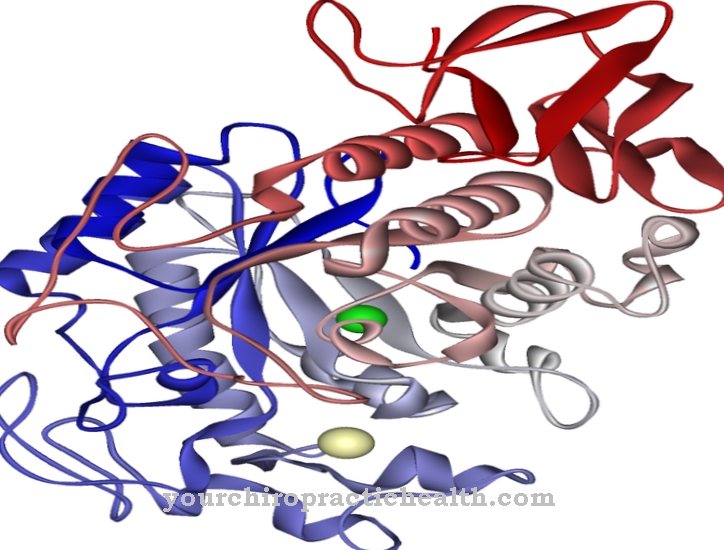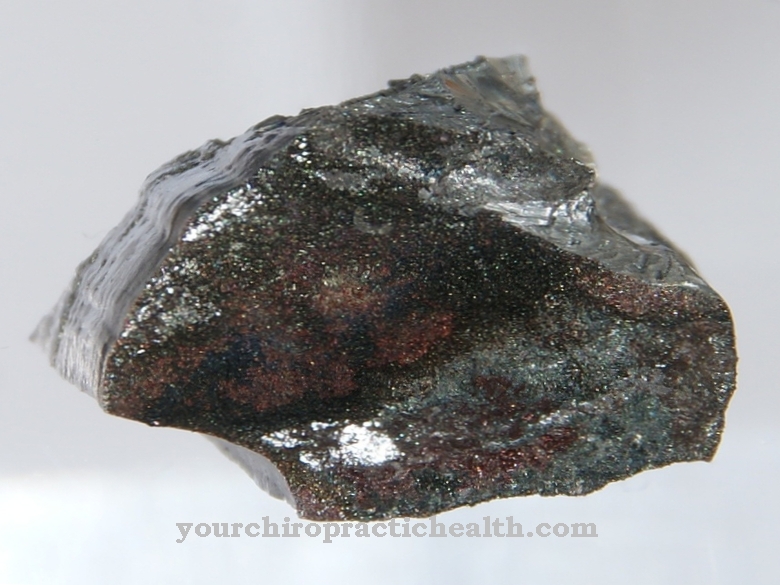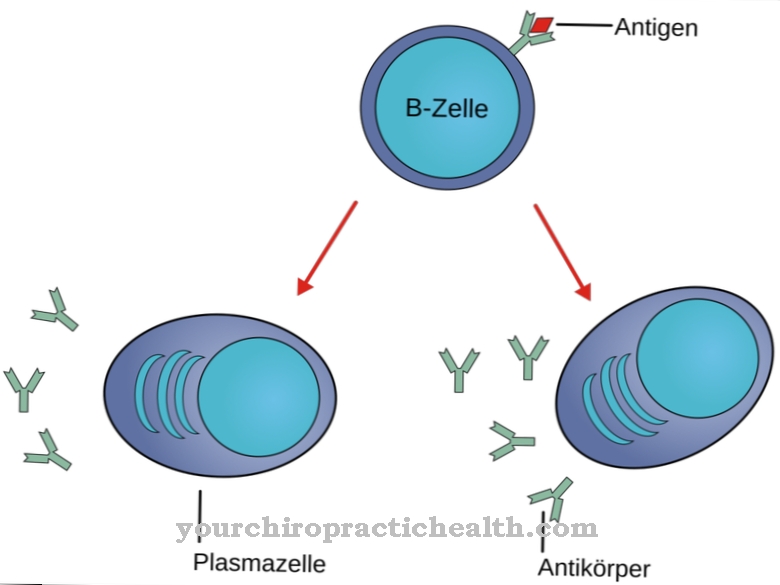Osteonectin is a protein that plays an important role in bone mineralization and thus participates in the strengthening of bones and teeth.
Under its synonymous name SPARC numerous scientific studies can be found that additionally point to a connection between the release of SPARC and the prognosis of various cancers.
What is osteonectin?
Osteonectin is a protein with a molecular weight of 35 to 45 kilo Daltons (kD). The mean molecular mass of 40 kD and its location in the basement membrane led to a further name: BM 40 (Basement Membrane Protein 40).
Finally, it turned out that another protein called Secreted Protein, acidic, cysteine-rich, also SPARC, is the same protein. This name indicates various properties: The acidic reacting protein is secreted and is rich in the sulfur-containing amino acid cysteine. Today the names SPARC and Osteonectin are primarily used. Osteonectin is a glycoprotein, which means that it contains carbohydrate groups (sugar building blocks) in addition to the protein component and is able to bind calcium.
Function, effect & tasks
Osteonectin acts primarily at the cellular level in the human organism. As a calcium-binding glycoprotein in the bone metabolism, it fulfills tasks in mineralization.
It has a high affinity for hydroxyapatite (a hydroxylated calcium phosphate salt) and is able to bind collagen, a typical structural protein. Mineralization is an important process in which calcium phosphates are built into the organic matrix of the body tissues. As a result, they acquire a particular strength. These tissues include bones, cartilage, and teeth. Tooth enamel, for example, consists of almost 100 percent hydroxyapatite and is the hardest substance in the human body. In natural tissues, the cells are found in a structure called the extracellular matrix.
Various interactions occur within this cell structure, for which osteonectin also plays a role. Other functions relate to cell growth and proliferation (cell proliferation, Latin: proles, scion; ferre, wear), which in its presence can be modulated, i.e. changed under different conditions. In addition, the protein supports the attachment of cells, a process that is of great importance for wound healing, and the spread of certain cell types. Osteonectin is involved in bone metabolism, in wound healing and during the regeneration process.
Education, occurrence, properties & optimal values
Particularly large amounts of osteonectin are found in immature bone tissue. Specialized bone cells that are responsible for the synthesis of the bone matrix are called osteoblasts. Active osteoblasts contain a lot of osteonectin, as well as cartilage and cells that play a role in tooth development (odontoblasts).
It is also synthesized by the fibroblasts. These cells occur in connective tissue and are of great importance for the extracellular matrix and its strength. In addition, macrophages (Greek, macros, large; phagein, eat) are able to produce the protein as part of the wound healing process. Macrophages are white blood cells that have important functions in the immune system. Endothelial cells that line the inside of the blood vessels also synthesize it. Osteonectin can be found in many metabolically active cells.
This fact is used for selected questions in order to estimate the current metabolic situation. The determination of the amount of this protein is not a routine laboratory test. To characterize certain biochemical processes within wound healing, bone metabolism or the activation of blood platelets, the quantification of the protein can provide important information.
Diseases & Disorders
Symptoms in which the protein is missing have not yet been described to date. Disorders that appear to be associated with changes in protein include lateral cystocele and chorioangioma.
A lateral cystocele (protrusion of the urinary bladder towards the vaginal wall) is a weak connective tissue that can lead to urinary incontinence or urinary retention. A chorioangioma is a rare benign swelling of the placenta, and far more important is the influence it has on processes within the development of cancer. Due to its diverse properties, the effect on different types of cancer does not seem to be identical. The protein levels differ in different types of cancer. Ovarian, prostate and pancreatic cancer show a low value, while breast cancer, glioma and melanoma are accompanied by higher values.
It is noteworthy that improvement seems to occur when one can raise the level through exercise and exercise. Exercising showed positive effects in cancer patients. This fact has led to a rethink in cancer care and the slogan "running away from cancer". Physical activity appears to affect gene function. Existing genes can be switched on or off or activated. Secreted protein acidic and rich in cysteine (SPARC) are probably involved in one possible mechanism. This protein is released during physical training. The nature of the influence on cancer growth and spread is currently controversial.
There is consensus on the involvement of osteonectin in changes in cancer cell activity and in the area surrounding the tumor. In some types of tumors, the tumor cells show a small amount of the protein, while it is very high in the neighboring cells. Some studies favor osteonectin as a tumor suppressor in various types of cancer. In others, the effect seems to run in the opposite direction. One cause can be the simultaneous effect on other molecules and processes that ultimately influence biological behavior in different ways.
























.jpg)



